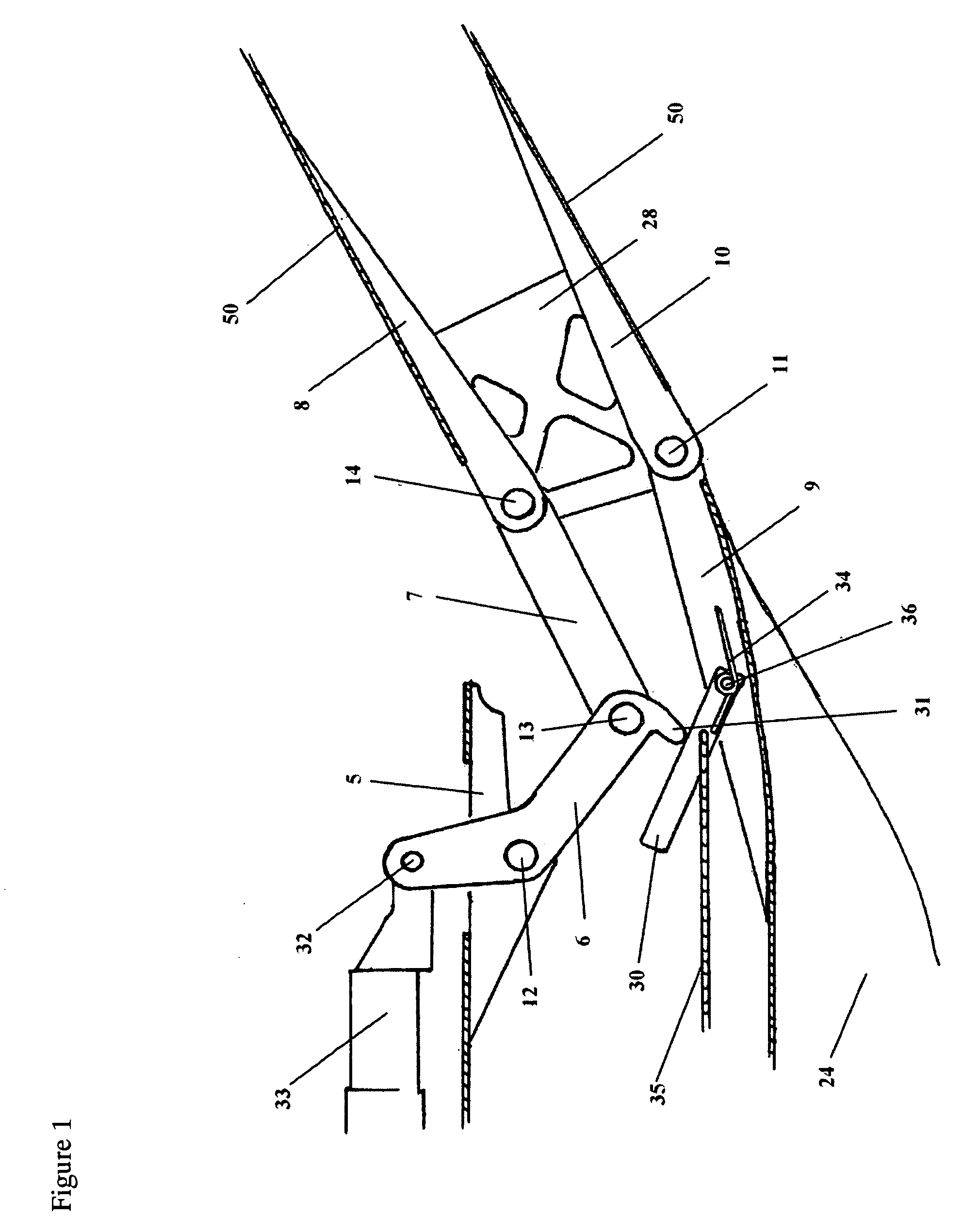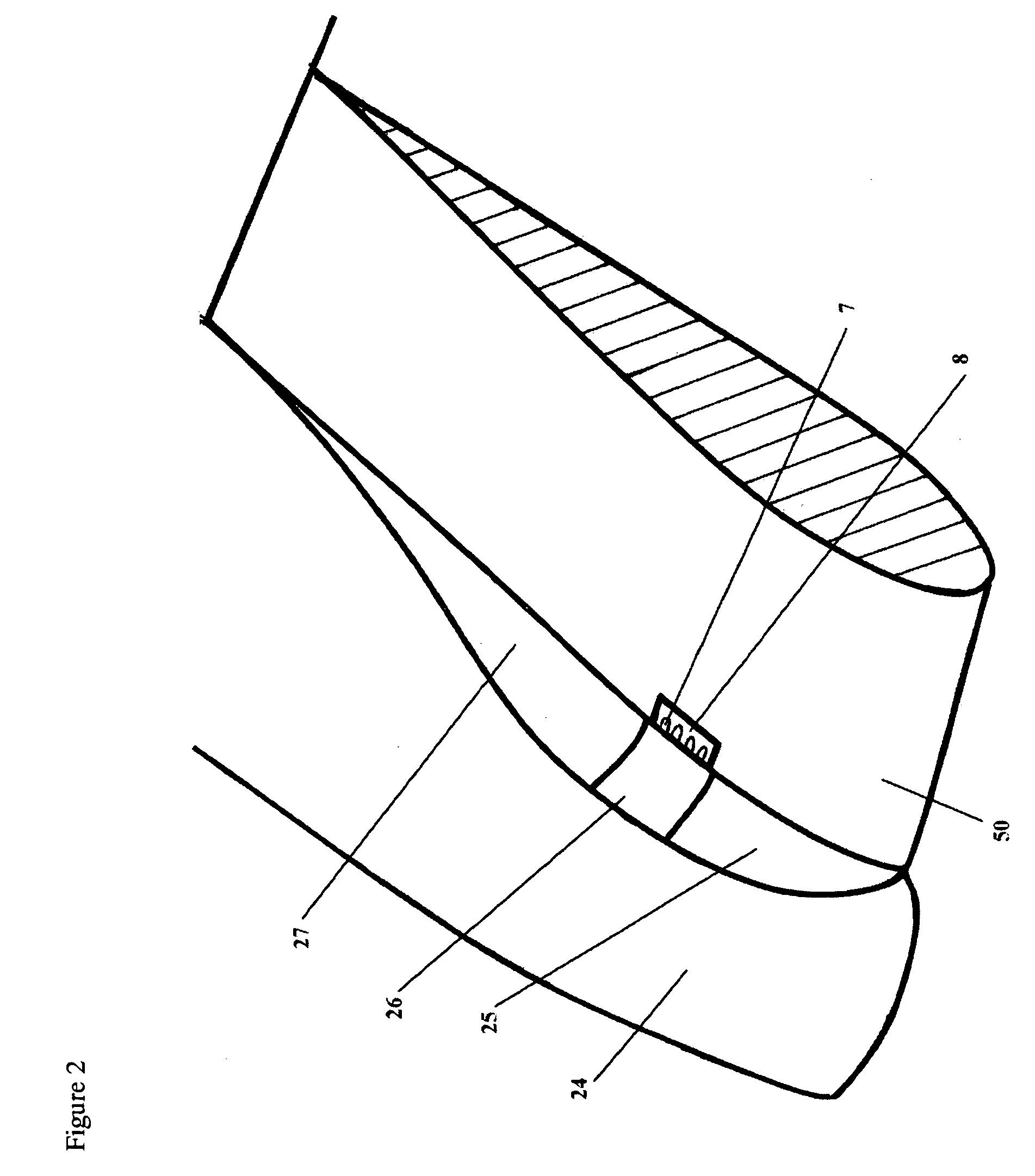Folding Wing Root Mechanism
a root mechanism and folding technology, applied in the direction of wing adjustment, aircraft stabilisation, aircraft convertible vehicles, etc., can solve the problems of non-backdrivability of the actuator, gaps, exposed mechanisms, etc., and achieve the effect of easy protection from the elements, long wing length, and high confiden
- Summary
- Abstract
- Description
- Claims
- Application Information
AI Technical Summary
Benefits of technology
Problems solved by technology
Method used
Image
Examples
Embodiment Construction
[0039]FIG. 1 shows the wing folding mechanism. In the preferred embodiment inner wing (50) is attached rigidly to hinge link no. 4 (8) and lower hinge wing side (10). Aircraft body (24) from which said wing will fold is mounted rigidly to hinge link no. 1 (5) and lower hinge base (9). Lower hinge base (9) and lower hinge wing side (10) are connected with lower hinge pin (11) so that the wing, attached to lower hinge wing side (10) can rotate about the axis created by lower hinge pin (11). The top half of the hinge mechanism consists of hinge link no. 1 (5) which is rigidly attached to the vehicle. Hinge link no. 2 (6) is allowed to rotate with respect to hinge link no 1 (5) using upper hinge pin no. 1 (12). The opposite end of hinge link no. 2 (6) is attached to hinge link no. 3 (7) with another hinge pin, upper hinge pin no. 2 (13). Hinge link no. 3 (7) is allowed to rotate with respect to upper hinge pin no. 2 (13), and is connected to hinge link no. 4 (8) with another hinge pin, ...
PUM
 Login to View More
Login to View More Abstract
Description
Claims
Application Information
 Login to View More
Login to View More - R&D
- Intellectual Property
- Life Sciences
- Materials
- Tech Scout
- Unparalleled Data Quality
- Higher Quality Content
- 60% Fewer Hallucinations
Browse by: Latest US Patents, China's latest patents, Technical Efficacy Thesaurus, Application Domain, Technology Topic, Popular Technical Reports.
© 2025 PatSnap. All rights reserved.Legal|Privacy policy|Modern Slavery Act Transparency Statement|Sitemap|About US| Contact US: help@patsnap.com



